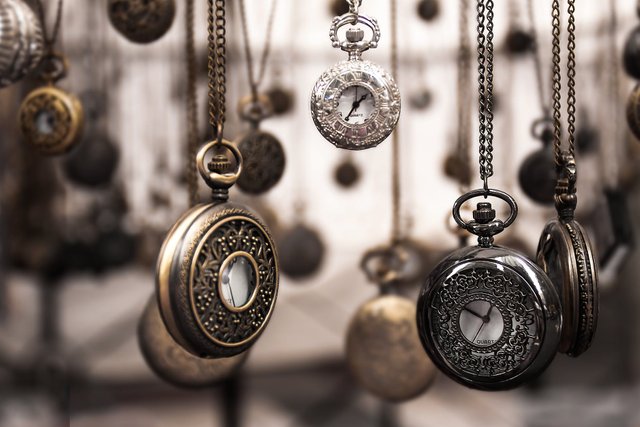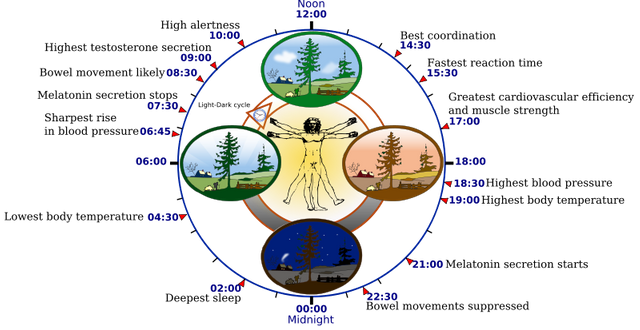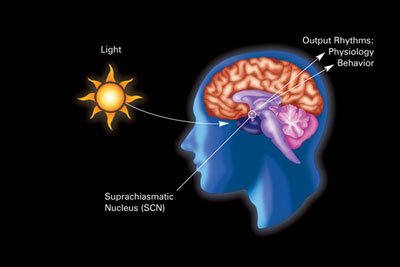Science of Organic Timing | Understanding The Natural Clock Within Our Existence
Money is a major topic in the society. It is a means of exchange and very essential in all spheres of life. Hence it is paramount that one understands the science of money making but most importantly, the art of money management.

Licence: Public Domain --- Source Pexels
Flowers boom in time and fruits are harvested in seasons. Mating period in certain animals are periodic, opening and closing of petals in certain plants are in respect to day and night. There is also seasonal migration of animals but all these can not be linked to the animals keeping a wristwatch, to-do list or concise calendar.
These instinctive reactions and activities are governed by a mechanism known as the Circadian Rhythm and it is not limited to the above mentioned organisms alone. It is evident in all living organism including man. Understanding this concept would make us more productive in our endeavors and as well help in managing certain disorders.
A circadian rhythm is any biological changes within an organism either from the cellular level to the systemic level of organisation that follows a 24 hours circle. It is endogenous, that is it originates within an organism but it is entrainable. To be extrainable implies that the circadian rhythm configured to match the timing of the environment. The rhythm can be entrained with environmental cues such as temperature and light. For instance, the presence of bright light could disrupt the normal sleep cycle in an animal.
The term circadian is coined from two Latin words- circa which means about and diem which means day. The circadian clock is not exactly 24 hrs. In a laboratory experiment with constant low light, the circadian clock in human was averaged to be 24.2 hours per day. The circadian rhythm or clock gets entrained when it receives significant corrective signals from the environment. Light has the weighty impart on entrainment.
The Circadian rhythm is impacted by the circadian clock.
Often times, people can distinguish between the terms circadian clock and circadian rhythm. Despite they can be used interchangeably in most context, the do not designate the same thing.

Licence: CC-SA-BY 3.0 --- Source: Wikimedia --- Author: YassineMrabet
The circadian clock an endogenous clock. It is made up of three major components: A central biochemical oscillator which produce cellular rhythms through complex interactions among genes, proteins and metabolites. Series of input pathways to the central oscillator which allows entrainments. And series of output pathways which regulates overt rhythms of the organism.
The circadian clock is interlaced with majority of cellular physiological and biochemical processes. Circadian clocks are sometimes referred to as biological clocks. The circadian clock is pecific to a 24 hours timing while biological clocks controls biochemical, physiological or behavioral activities over a period of 24 hours, seasonal or other regular cycle.. There are different circadian clocks in the body all governed by a master clock in the hypothalamus of the brain.
The master clock in the brain coordinates all other biological clocks in an organism, it keeps them in sync. In vertebrates including humans and other mammals, the master biological clock is formed by a group of 20,000 neurons in the hypothalamus known as the suprachiasmatic nucleus.

Licence: Public Domain --- Source: Wikimedia
The circadian rhythm is a biochemical, physiological or behavioral event which occurs every 24 hours, they are controlled and influenced by structures known as circadian clocks.
There are a lot of articles on how to make proper use of our body's circadian rhythms as to what activities to do and when to do them not forgetting rest. A rhythm can be called circadian if it repeat itself once a day and if it persist in absence of an external cue. Circadian rhythms are endogenous and not learned behaviors hence will persist in absence of external factors to entrain them.
Circadian rhythm influences the sleep-wake cycle, eating habits, digestion, hormonal secretion among other vital physiological functions. It is slightly unique to every individual, not everyone sleeps the same time and not everyone maintain the same body temperature at a period of time. Understanding your circadian rhythm helps you utilize it properly and to its fullest. Irregular rhythms can lead to disorders such as insomnia, obesity, anxiety, depression and diabetes. We are advice to keep a stable rhythm- a constant sleeping and waking time everyday including weekends.
The best time for breakfast is one hour after waking up so as to replenish the low glucose level in the blood. Exercise should be done an hour after breakfast. Napping should bot be higher than 20 minutes and dinners should be eaten before 6:30 pm.
Researching more on biological clocks and rhythms not only will improve our individual lives but help us in agriculture, zoology and every field that deals with living organisms.
Further Reading
- Molecular analysis of mammalian circadian rhythtm
- Rhythmic Oscillator
- Utilizing circadian rhythm
- Circadian Rhythm Overview
Image Declaimer:
All images used in this post are under Public Domain, CC0 and CC-BY-SA-3.0 licencing. Images needing attributions are attributed properly after immediately usage.


If you write STEM (Science, Technology, Engineering, and Mathematics) related posts, consider joining #steemSTEM on discord here. If from Nigeria, there may be need to include the #stemng tag in your post. You can visit this blog by @stemng for more details. You can also check this blog post by @steemstem here and this guidelines here for help on how to be a member of @steemstem. Please also check this blog post from @steemstem on proper use of images devoid of copyright issues here.
This post has been voted on by the steemstem curation team and voting trail.
There is more to SteemSTEM than just writing posts, check here for some more tips on being a community member. You can also join our discord here to get to know the rest of the community!
Hi @damzxyno!
Your post was upvoted by utopian.io in cooperation with steemstem - supporting knowledge, innovation and technological advancement on the Steem Blockchain.
Contribute to Open Source with utopian.io
Learn how to contribute on our website and join the new open source economy.
Want to chat? Join the Utopian Community on Discord https://discord.gg/h52nFrV